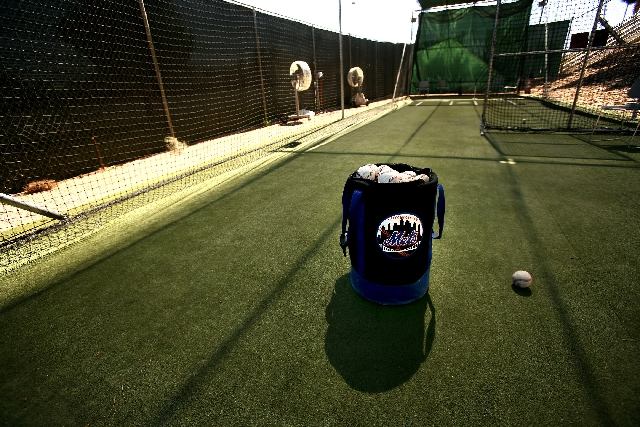Baseball exec: Cashman ‘not designed for the modern customer’
Whether you’re the top executive of Major League Baseball or the National Football League or — in this case — the Pacific Coast League, the playbook for lobbying for a new sports venue financed with public dollars is usually the same.
Step 1: Explain to the locals that the current ballpark is too old and lacks the bells-and-whistles amenities for the modern fan and player.
Such was a message brought to Las Vegas last week by Branch Rickey III, the Pacific Coast League president who was visiting Cashman Field for the Cashman Center’s 30th anniversary reception.
A lot has changed in 30 years in the world of sports stadium architecture since Cashman Field was opened, a point driven home by Rickey , grandson of legendary Brooklyn Dodgers general manager Branch Rickey.
In 1945, his grandfather made history when he helped break baseball’s color barrier by signing Jackie Robinson, Major League Baseball’s first black player.
In an interview with the Review-Journal before Wednesday night’s game, Rickey , 67, said he supports an initiative by the future owners of the Las Vegas 51s to leave Cashman Field for a proposed
$65 million ballpark next to Red Rock Resort in Summerlin.
An ownership group headed by Summerlin businessman Steve Mack and the Howard Hughes Corp. is less than a month from closing on the $20 million purchase of the 51s, the Triple A affiliate of the New York Mets. In 2012, 51s attendance averaged 4,388 fans at 9,334-seat Cashman — the fourth lowest in the ballpark’s 30-year history.
Put simply, Cashman is “not designed for the modern customer,” Rickey said.
“The reality is stadiums have a certain shelf life. Obviously, we have entered a new era of architecture and design. The economic structure of Triple A baseball has changed dramatically,” he said.
Modern Triple A ballparks have upscale features such as money-making corporate suites and updated points of sale for fans to buy more exotic food and drinks.
Team officials point out that Cashman Field lacks common player facilities such as indoor batting cages and training rooms.
The lack of modern amenities was cited by the Los Angeles Dodgers as a factor for the team’s decision to move its Triple A club to Albuquerque, N.M., in 2008 after an eight-year run in Las Vegas. The 51s were the Triple A affiliate of the Toronto Blue Jays from 2009-12.
At the time five years ago, Dodgers director of player development De Jon Watson said Albuquerque had a better facility to develop players.
Rickey also said the current stadium’s location is not ideal to draw fans from around the Las Vegas Valley.
Cashman Field is in a low-income neighborhood, which includes some blighted housing, just north of downtown Las Vegas, off Las Vegas Boulevard.
The proposed Summerlin location is a suburban, more affluent setting. The 51s’ future owners also have proposed a mini-urban village around the proposed ballpark.
Rickey referred to the ballpark destination issue in a Feb. 12 letter to Mack supporting the Summerlin location. It reads, in part, “Our success ... rests on our ballparks being a safe destination for mothers, fathers and children, all wanting to indulge in affordable entertainment.”
The proposed Summerlin stadium already has a name, “The Ballpark at Summerlin Centre,” and would have 8,000 to 9,000 seats.
The future owners have proposed a three-way public partnership among the city of Las Vegas, Clark County and the Las Vegas Convention and Visitors Authority to float bonds to pay for the proposed $65 million ballpark.
The Summerlin site is in Clark County, about 500 yards outside Las Vegas’ city limits. The LVCVA runs Cashman Field, and the 51s pay $314,800 in rent this year.
Rickey appeared at an LVCVA board meeting in October to encourage the board to extend the 51s’ lease at Cashman.
Asked whether he will lobby LVCVA and local political leaders for public dollars for a new Summerlin stadium, Rickey said, “Our office is not designed to be a hands-on negotiating entity.”
Opponents of public financing of ballparks and stadiums argue that the team owners should pay for the sports venues, especially when they receive the lion’s share of the revenues.
Contact reporter Alan Snel at asnel@reviewjournal.com or 702-387-5273.


















